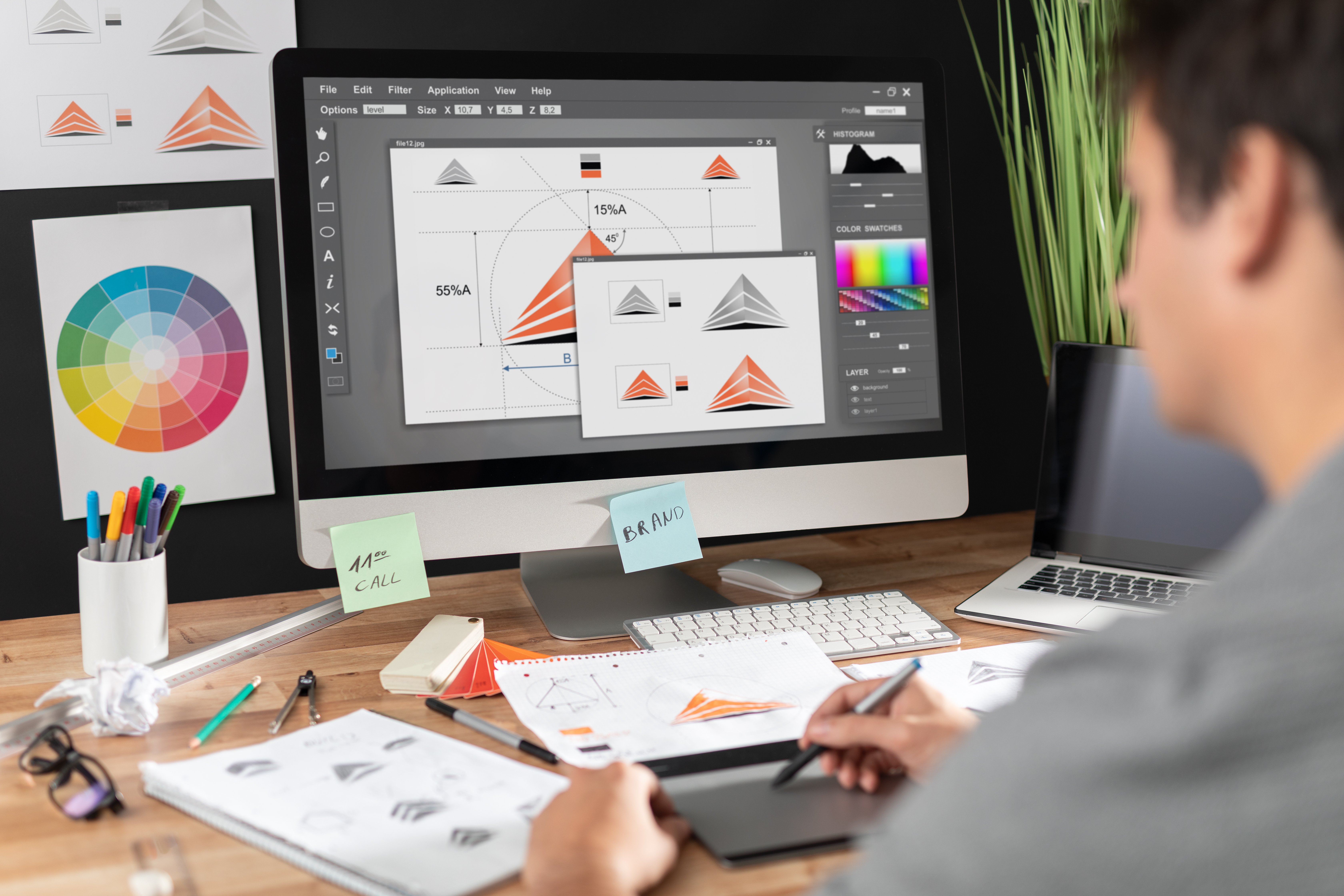Graphic design is a crucial aspect of visual communication that combines elements of art, technology, and psychology to convey a message or create an identity for a brand. It encompasses a wide range of mediums such as logos, websites, brochures, packaging, and advertisements. With its ability to shape perceptions and influence behavior, graphic design has become an essential tool for businesses and organizations in today’s visually-driven world.
At its core, graphic design is about solving problems through visual communication. Designers use their creativity and technical skills to come up with effective solutions that cater to the needs and objectives of their clients. They are responsible for creating visually appealing and meaningful designs that can capture the attention of their audience and convey a message in a clear and concise manner.

One of the key factors that make graphic design a powerful tool is its ability to evoke emotions and create a connection with the audience. By using elements such as color, typography, and imagery, designers can create a specific mood or feeling that resonates with their target audience. This element is particularly important in advertising and branding, where the goal is to create a memorable and emotional response that sticks in the minds of consumers.
A successful https://studioabedini.com/ not only makes an impact on the audience but also creates a sense of trust and credibility for a brand. A well-designed logo, for example, can give a sense of professionalism and reliability, while a poorly executed one can have the opposite effect. Similarly, a visually appealing website can make a user feel comfortable and confident in the brand’s products or services.
In addition to its artistic aspect, graphic design also relies heavily on technology. Designers use various software and tools to create their designs, and new technologies such as virtual and augmented reality are continuously expanding the possibilities in this field. However, even with all the advancements in technology, the basic principles of design remain the same – typography, layout, and composition are still the building blocks of a great design.
Another crucial aspect of graphic design is its role in conveying a brand’s identity. A brand is not just a logo or a color scheme; it is the overall image and personality of a company. Graphic designers work closely with their clients to understand their brand’s values, mission, and target audience to create a design that accurately represents their brand and sets them apart from their competitors.
One of the significant challenges of graphic design is to create designs that are not only aesthetically pleasing but also functional and effective. It requires designers to have a deep understanding of human psychology, including how people perceive and react to different visual elements. A design may look beautiful, but if it fails to convey the intended message or evoke the desired emotion, it will not be considered successful.
Moreover, graphic design is a constantly evolving field. With new design trends and technologies emerging, designers must stay updated and adapt to the changes to remain relevant. They must continue to challenge their creativity and push the boundaries to come up with innovative designs that can capture the ever-changing tastes and preferences of their audience.
In conclusion, graphic design is an essential element in modern communication and marketing. It combines the principles of art, technology, and psychology to create designs that are not only visually appealing but also effective and functional. In a world where visual content dominates, graphic design has become a crucial tool for businesses and organizations to communicate their message and establish their brand identity.